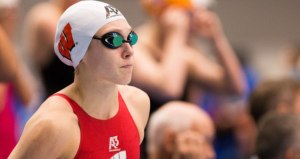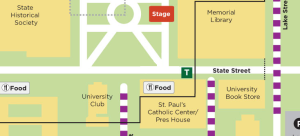…OR IS THERE A LITTLE MORE TO IT?
Recently I visited Ian’s Pizza on several occasions, each time noting happenings around me—the ones that stood out, yes. But also, and more interestingly even, the ones that I had n ever thought to question. I began many internal questions with W’ s—What? When? and most often, Why? Why is Ian’s one of the most popular restaurants in Wisconsin’s capitol city? It’s just a small pizza place. Ian’s sells insurmountable amounts of pizza. Why? It got me thinking, and as I visited on a variety of occasions, I formulated several hypotheses. On the one hand, maybe the pizza tastes too good when we are drunk.
—What is Ian’s?
 Ian’s is one of the finest pizza establishments in Madison—my opinion, of course. Over its years the humble pizza joint has become a hub for student activity at the UW and a fundamental feature of the city as a whole. The inside doesn’t boast much—relatively limited seating, not-so-flawless flooring and walling. In general, the place hasn’t changed much since it opened. It’s humble fluorescents have been lighting midnight meals of college students for years. Ian’s is orange, it is yellow; it smells like greasy pizza and booms loudly with raucous voices even out on the sidewalk. I’m led to believe that maybe this is the way its always been.
Ian’s is one of the finest pizza establishments in Madison—my opinion, of course. Over its years the humble pizza joint has become a hub for student activity at the UW and a fundamental feature of the city as a whole. The inside doesn’t boast much—relatively limited seating, not-so-flawless flooring and walling. In general, the place hasn’t changed much since it opened. It’s humble fluorescents have been lighting midnight meals of college students for years. Ian’s is orange, it is yellow; it smells like greasy pizza and booms loudly with raucous voices even out on the sidewalk. I’m led to believe that maybe this is the way its always been.
—When is Ian’s
In the small hours of the morning when sleep sounds like a pretty logical option, Ian’s still thrives: Thursday nights, Friday nights, and Saturday nights. In my experience, I have grown to trust that every weekend will be busy. How many restaurants can rely on this level of anomalous consistency? Weekdays with sparse but steady trickles of patronage, followed inevitably by weekends of irrepressible floods? Everybody knows that Ian’s gets rowdy. But upon closer inspection, the phenomenon of late-night pizza has become truly fascinating to me. Again, perhaps intoxication is to blame. But I’m not so sure. Perhaps there is more to it.
“Miss, I think the bathroom is flooding.”
I break now for a short anecdote that, at the time of its happening, seemed nothing but ridiculous. But now, in hindsight and set on the backdrop of questions on mystical pizzacism, it seems like it might lend something like meaning.
 It was a Saturday night, as I remember, and immediately upon entry I made my way through a modest sea of people to get to the bathroom to wash my hands. The room was occupied, but soon a man emerged and hurriedly shouldered past me and out the side door to the street. His darted glancing and swift exit made me wonder What’s this guy’s deal? Entering the bathroom, however, I immediately understood, as I watched the toilet water rapidly rise to the cusp of the toilet bowl, my comprehension struggling to keep up with its imminent maximization. Sure enough, the water reached the toilet seat and began to pour over the side, at which point I hurriedly exited to go alert an employee. I hope people don’t assume I did it, I could only think.
It was a Saturday night, as I remember, and immediately upon entry I made my way through a modest sea of people to get to the bathroom to wash my hands. The room was occupied, but soon a man emerged and hurriedly shouldered past me and out the side door to the street. His darted glancing and swift exit made me wonder What’s this guy’s deal? Entering the bathroom, however, I immediately understood, as I watched the toilet water rapidly rise to the cusp of the toilet bowl, my comprehension struggling to keep up with its imminent maximization. Sure enough, the water reached the toilet seat and began to pour over the side, at which point I hurriedly exited to go alert an employee. I hope people don’t assume I did it, I could only think.
After I alerted a girl behind the counter, her eyes grew wide and she thanked me, disappearing into the back room. Hearing commotion behind me, I turned to discover with dismay that the water had began to actually creep out of the bathroom from underneath the door. Very soon the water encroached standing space where customers waited in line, sending flustered patrons out of the way, yelling, climbing up on the railing. The wide-eyed employee emerged, looking prepared and anticipatory with a plunger and disappeared into the unknown, spectators lauding her bravery. After a few minutes she reemerged, having stopped the water flowing, gaining an applause from the populous of the establishment.
After that, things went largely back to normal.
So? What’s the big deal?
Maybe nothing. But for me, I wondered: How many restaurants could survive a flooding from the bathroom so unperturbed? Nobody—myself included—even gave it a second thought. I pictured myself in Potbelly, in Roast, in Tutto Pasta, and what the reaction to a bathroom flooding into eating space would look like at these places. Interesting to consider differences. And that brings me to my next question.
—Why Ian’s?
Eateries do all sorts of things to attract new customers. They renovate. They advertise farther and wider. They concoct combo deals for meals and monthly specials, etc. Ian’s, generally, doesn’t do any of these things. During my visits, I realized that Ian’s has accomplished something remarkable. Sure, the pizza is delicious. But I think there is a little more to it than that. Ian’s is an establishment that perpetuates its own legacy during its own time; advertisement comes form word of mouth, reliability of tradition bringing in new customers from far and wide. Renovation isn’t necessary because customers know precisely what Ian’s is—it doesn’t pretend to be anything more. It doesn’t try to reach out further or appeal to more, and it definitely doesn’t need to change. Ian’s fits comfortably right in the space it has found for itself—nestled humbly on Frances Street, residing peacefully and earnestly in the hearts and minds of thousands of college students. Ian’s is tradition. And that’s why.
Or maybe people just eat more when they’re drunk. I don’t know.

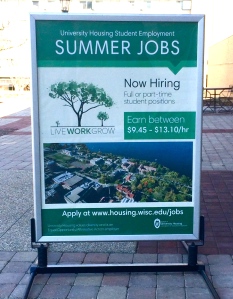
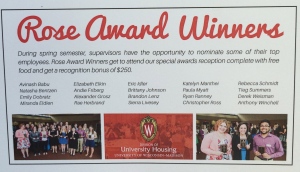










 4. While many teams have gotten new facilities in the recent years,the swim and dive team still uses the Natatorium, which was built in 1963 when the university realized the Red Gym was not large enough.
4. While many teams have gotten new facilities in the recent years,the swim and dive team still uses the Natatorium, which was built in 1963 when the university realized the Red Gym was not large enough. 5. In 1971, the Wisconsin women were able to compete on the national level for the first time. They placed 25th in the national championships that season.
5. In 1971, the Wisconsin women were able to compete on the national level for the first time. They placed 25th in the national championships that season.

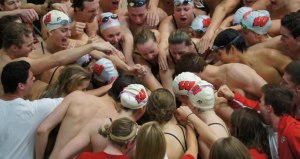 8. Both the men’s and women’s teams train together which is not seen in all programs around the nation. This makes the teams more as equals.
8. Both the men’s and women’s teams train together which is not seen in all programs around the nation. This makes the teams more as equals. men and women’s swim and dive team have seen a total of ten Olympians from this program, there hopefully will be one more added to that list next year, Ivy Martin.
men and women’s swim and dive team have seen a total of ten Olympians from this program, there hopefully will be one more added to that list next year, Ivy Martin.